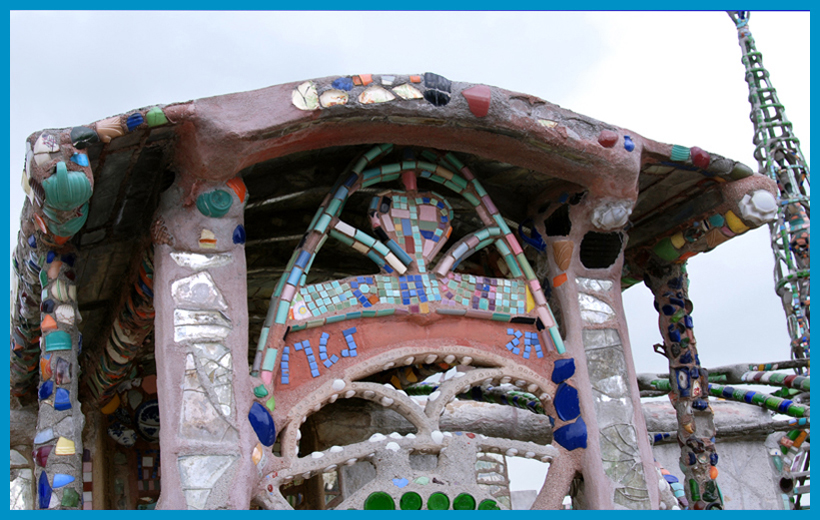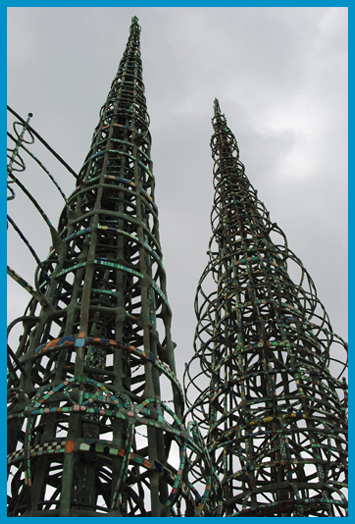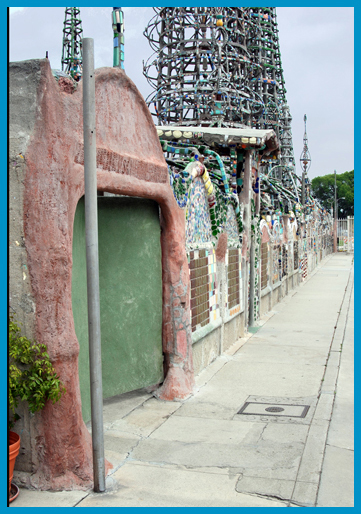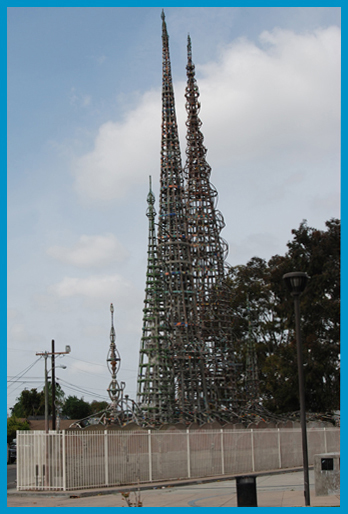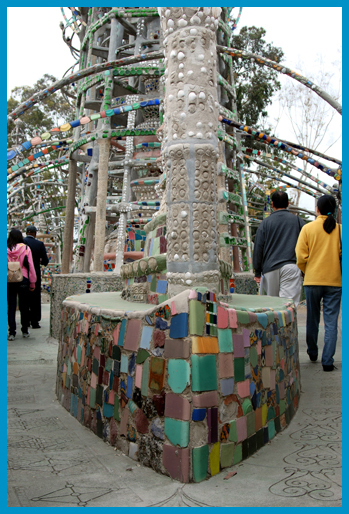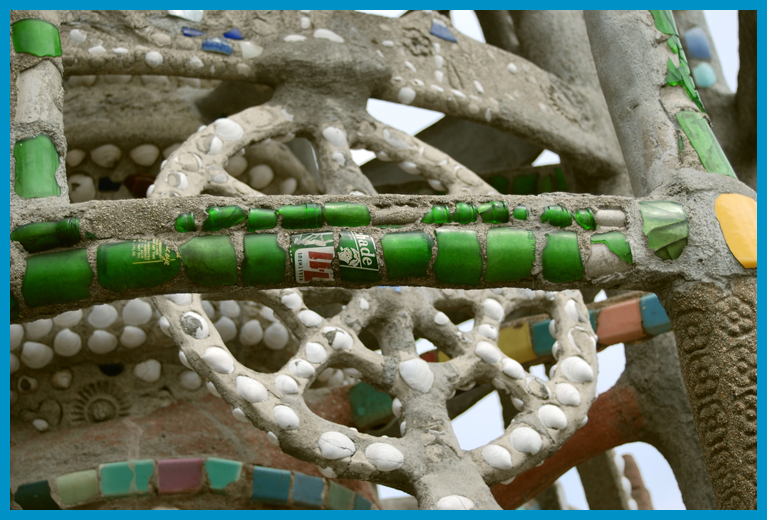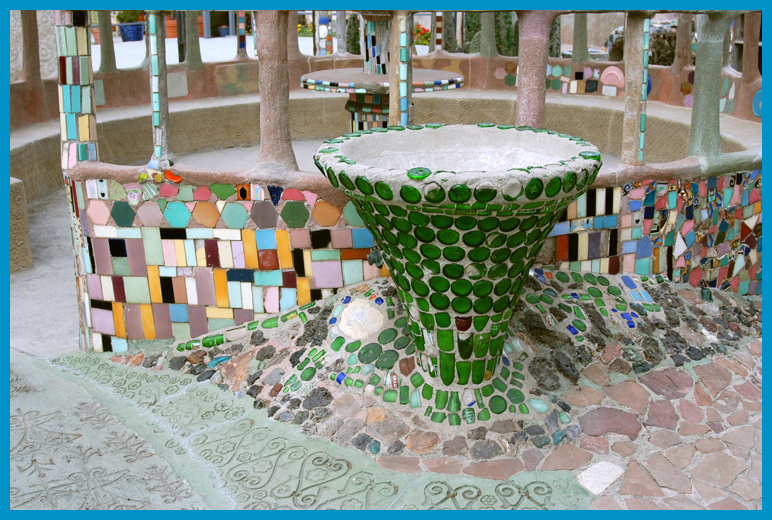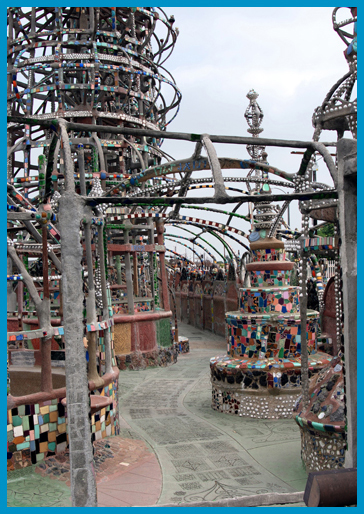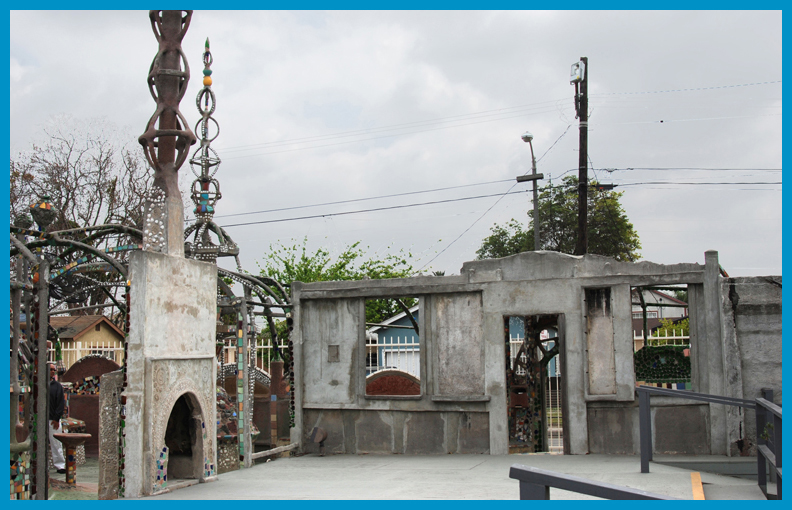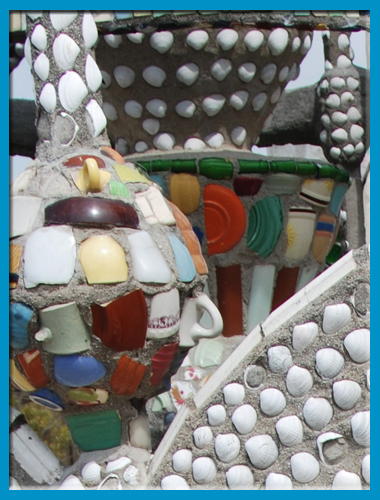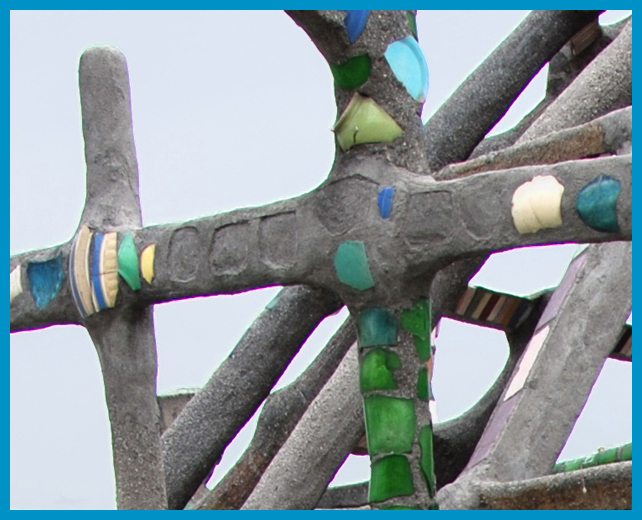Rodia's few recorded footprints often lose track with the commonly-traced path of his early years. He was often an unreliable witness to his own life. Each successive census recorded a later birth date, while the year of his immigration shifted from 1894 to 1891 to 1901.
One oft-repeated story is that Rodia immigrated with no education or job skills, settled in the Pennsylvania coalfields with a brother, and then moved west after his brother died in a mine accident. However, the only Sam Rodia enumerated in the 1900 census was one of three bachelor brother barbers living together in Philadelphia.
Rodia apparently went west and married a short time later. Census records show that his son Frank was born in 1903 in Washington State, and his youngest son Furi in California in 1905. The 1910 Census found Samuel Rodia in Alameda, divorced, living only with his sons, and working as a watchman.
By his own account, Rodia at that time had fallen into alcoholism and lived as a solitary nomad for a decade. Was he the Samuel Rodia whose World War I draft card gave his address as 426 South Kansas in El Paso, his employment as janitor at the James Marr Company, and his wife's name as "Mary Venita Rodia"?
